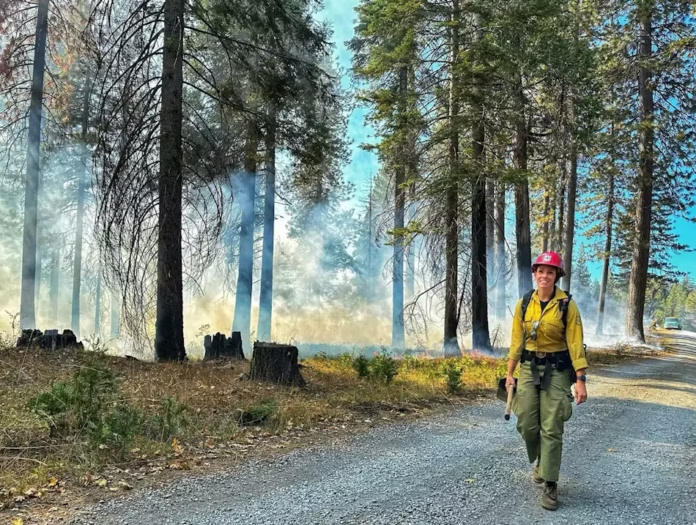Concerns Rise as Policy Changes Disappear from Government Websites
Weeks after the Labor Department extended workers’ compensation coverage to include cancers affecting female and transgender firefighters, concerns are mounting as information about the policy change has vanished from government websites. The sudden removal has sparked fears that the newly granted protections may be at risk under the Trump administration.
A Long Battle for Coverage
Federal firefighters have long fought for presumptive workers’ compensation for illnesses linked to toxic exposures on the job. After nearly three years of advocacy, breast, ovarian, cervical, and uterine cancers were finally included in coverage through the Labor Department’s special claims unit. This addition ensured a streamlined claims process for affected firefighters, a significant improvement from past practices that saw only 29% of firefighter occupational disease claims approved.
The policy, implemented in the final weeks of the Biden administration, aimed to address an oversight that left female reproductive cancers off the initial list of covered illnesses. While numerous cancers—including lung, brain, kidney, and melanoma—were already recognized for expedited claims, female firefighters and advocacy groups were dismayed to find that certain cancers predominantly affecting women were initially excluded.
Concerns Over Policy Reversal
Shortly after President Trump took office, the Department of Labor removed online references to the expanded coverage. Officials have since declined to clarify whether claims for breast, ovarian, cervical, and uterine cancers will continue to be processed under the special claims unit.
This uncertainty has alarmed many in the firefighting community. Pete Dutchick, a federal firefighter and advocate, stressed the importance of ensuring continued coverage. “Firefighters dedicate their lives to protecting the public. They should not have to fight for healthcare after facing occupational hazards that put them at higher risk of cancer.”
Scientific Research Supports Coverage
Years of research have linked firefighting to increased cancer risks. A study following Florida firefighters found elevated cancer rates among female firefighters. The International Agency for Research on Cancer classified firefighting as a cancer-causing profession in 2022. Additionally, studies have connected perfluoroalkyl substances (PFAS), found in firefighting gear, to breast and uterine cancer.
Despite this evidence, female firefighters have historically been underrepresented in occupational health studies, contributing to past exclusions from coverage. Advocacy groups have pushed for research to better reflect the risks faced by all firefighters, regardless of gender.
The Future of Coverage Remains Uncertain
Without formal rulemaking or congressional intervention, the fate of this expanded coverage remains unclear. Federal firefighters who developed cancer before the streamlined process existed, like Kaleena Lynde, know firsthand the challenges of navigating workers’ compensation without dedicated support. Diagnosed with small cell ovarian cancer at just 22 years old during her third fire season, Lynde underwent multiple surgeries and chemotherapy without the benefit of expedited claims processing.
Advocacy organizations continue to push for permanent protections. “Hazard pay won’t stop cancer,” said retired firefighter and researcher George Broyles. “The government must be upfront about the risks and ensure proper support for those affected.”
For now, federal firefighters and their supporters remain vigilant, watching closely to see whether the protections they fought for will endure or disappear in the shifting tides of policy changes.
